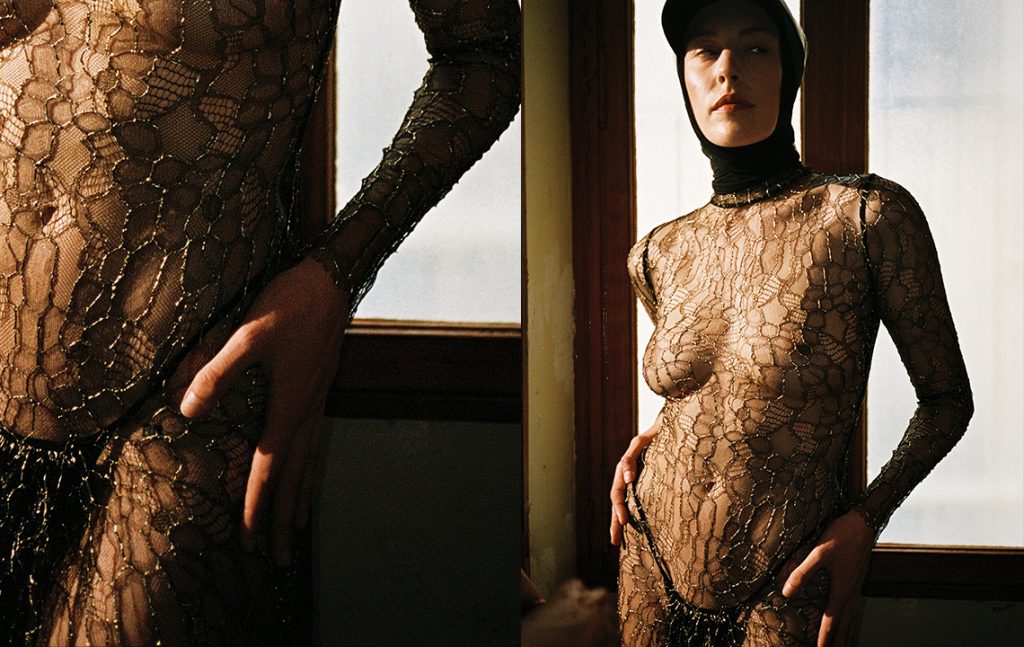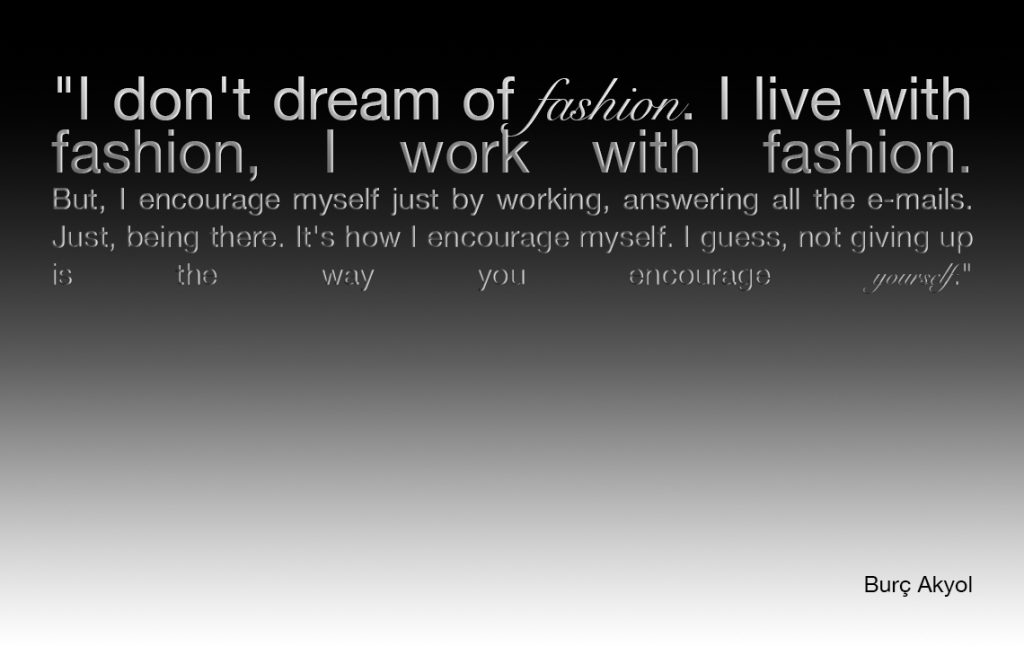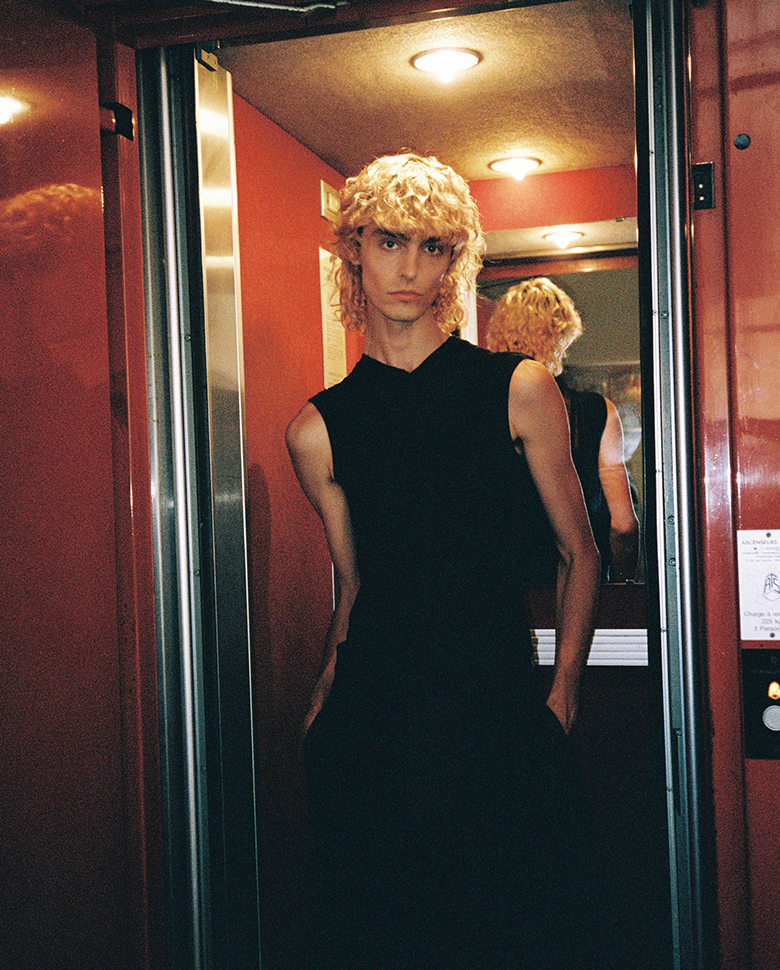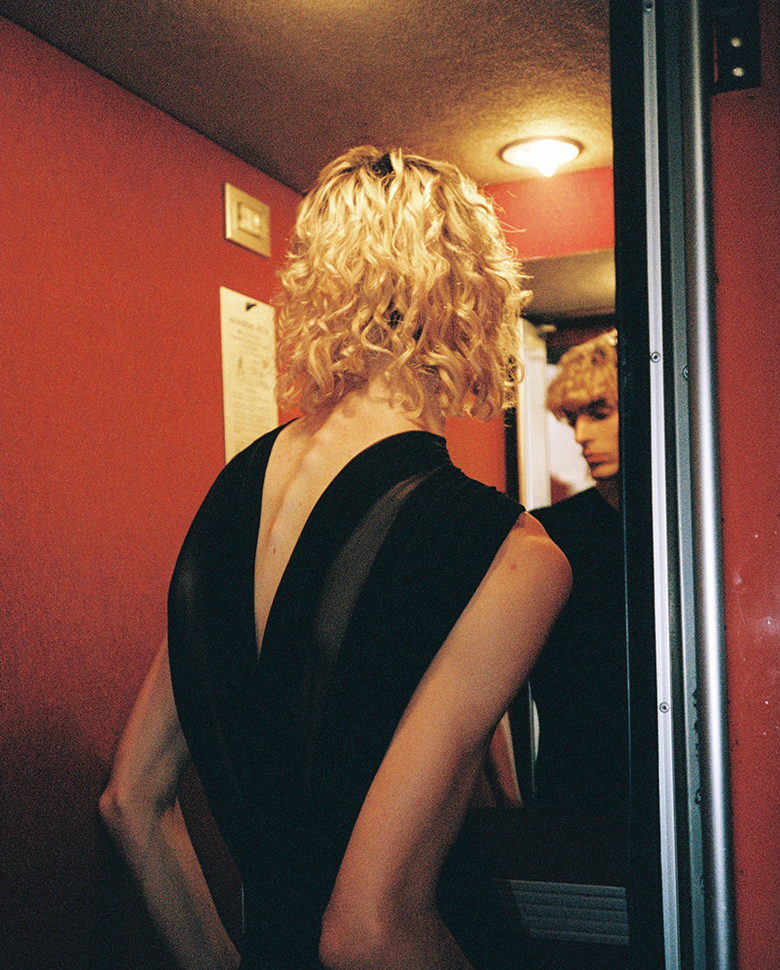Whatever You Want Until It Rings Right w/ Burç Akyol
For Burç, fashion is life itself! Everything he does is related to fashion. It’s a passion, a lifestyle. He places fashion in a realm far from individuality and interprets it as a state of harmonizing with society. It’s not about finding oneself, but about presenting oneself… A space where you feel more comfortable and confident. There is no room for disappointment in this universe. There is only a desire to be more honest and create a closer reality to all those emotions and moods he believes in.
When did you first start dreaming about fashion?
I think it was when I was around seven or eight, maybe slightly later, when I discovered the shows of Emmanuel Ungaro and John Galliano, on TV. It was very late at night one day and I, and I think it was first the Eddie Slimane show for Dior Homme where I was looking at the pieces and this fabulous runway with people who looked like me. They were young, they were wearing things that I wanted to wear myself. I think that’s the first time where I understood fashion.
What does fashion mean to you?
Everything? I think everything. It’s my way of thinking. It’s my way of eating. It’s my way of dreaming. It’s everything that I do is related to fashion. Even when it’s super away from fashion, it’s related to fashion. I think fashion for me is a way of living. It’s a lifestyle. It’s something that haunts you from the moment you wake up and is in my mind until the moment I go to bed. It’s passion.
How do you interpret fashion as a definition of individuality?
What is so funny is that I think that fashion has nothing to do with individuality. In the contrary, I think it’s something that you use to find yourself a community, to find yourself within a community, to actually say, ‘I’m part of this.’ It’s kind of a personal translation of everything that you think is beautiful. It’s like science for the world to recognize where you are, who you are with, what your ideals are and it’s a bit like culture. So, I don’t think it’s individual. I think it’s a group thing. I think it’s a shared thing.
Burç Akyol’s designs have a unique approach beyond gender identities, how would you describe this design philosophy?
I don’t know how to describe… I really think that clothes have no gender. That’s how I felt all my life. It started with me being so skinny when I was a teenager that the only pants that I could find that wouldn’t look like a parachute on me were pants from a women’s wear brand. And they were just like a straight, regular pant. If you think like that, you just go within a store and you find something that you think looks good on you and you put it on, and from that moment on, the uniqueness disappears. It just becomes a very normal approach, and I think that’s how it should be. I don’t look at it as genderless, gender fluid idea. It’s just clothes that I love doing and I love wearing and, and I think that’s how we should look at pieces and it shouldn’t have to bear a label. It should just be something that you want to put on yourself, that you feel comfortable with, that you feel confident in.

When we consider dressing as an individual form of expression, what kind of space does fashion provide us?
What I love about fashion is that it gives you a safe space where you can actually play with your clothes, play with the things that you like, play with, you know, identity, no identity.
Sometimes I even like the idea of anonymity when you, when you dress. Things that don’t give away your thoughts or your ideas. I think any form of expression has always better worked within a group. I mean, when we think of punk fashion in the 80s with the British, there was a group, and it was a subculture. So, it’s always accompanied and within, if we think like that, what I love about fashion and any type of fashion, any form of fashion, is that it is a safe space.
Kind of like this worldwide atelier where you can experiment, play, do whatever you want until it rings right, until you find your tune and your natural voice. Let’s look at it this way.
How would you define the DNA of Burc Akyol’s designs?
It’s weird because you’re asking me to define myself and what I love about having my own brand and doing this work is that I’m discovering myself as I go. I love that I can merge into a newness every season and kind of develop new scales and new feathers and show you a different skin every season of mine, like a different facet of Burc Akyol. What’s exciting about fashion is that you don’t have to define so much, you just experiment, you just show one season something, the next season you show another facet and it evolves. And I love the fact that it’s not just like stone where everything you said is there forever and cannot move.
Fashion is, on the contrary, so exciting because it’s so fluctuant and you can go further, you can go back and do all of this. But if we have to go to the pillars of what Burç Akyol is, of course, there’s a love of qualitative, beautifully made, artisanal clothes. It is sexy because I think, even though I’m not trying to make sexy clothes, the fact that it’s always a bit distant, always a bit with a surprise, always with the best quality material, a little nonchalant.
Maybe, sometimes a little dangerous as well, to make it sexy. So, I love the fact that, I can actually tap into myself as a person to define the DNA. I’m Turkish, I was born in France, I have this bicultural heritage, and I love exploiting that in my designs. It just feels natural to be this in between person. So, I guess that’s how I would define at least the pillars of the brand and the rest is life. The rest is whatever happens before you decide what the season is going to be about.

You’ve mentioned that you hate those who are ‘in denial of the body’ in designs. Could you elaborate on this definition a bit more?
I don’t hate the ones that are in denial of the body. I just feel like it’s a shame. Clothes are here to dress you, essentially and whenever somebody hides, I feel like in very oversized shapes and very like camouflaging their body, I feel like there’s something in there that feels unconfident about the body that they have. My job as a designer and someone who works in 3D around the body is to celebrate that body is to give it the right structure and support so that it moves in this magnificent way. It gives you confidence. It gives you posture. What I mean to say is, don’t be in denial of the body. Embrace your body. When some shows where you have a very diverse casting and you have a body positive casting and some of the models are fuller, usually they always put them in like big coats that hides their bodies. I don’t think that’s the right message to send. I think in the contrary, if you embrace the body diversity and you’re not in denial of the body, then you can start doing interesting designs for any types of bodies.
With a commitment to your oriental roots while presenting a European line, what story lies behind your collections?
The story that lies behind the collection is, again, very underlined with everything that I said about the DNA of Burc Akyol designs. I think there are pillars that I’ve already expressed in the previous question and There are things that happen to me every season, every, I have to design a new collection every six months that gives me time to just reflect on the things that I’ve done that I love, that I want to continue doing. Time to reflect on what’s happening in the world, and where we’re headed as consumers, where we’re headed as people who live with values, and things we believe in, how to express those fun moments of our lives, and inspiring people that we meet, and, falling in love, going to a good movie that moves us, and listening to a new song, or a new singer, and, and, and falling in love again. I guess it’s all of these episodes in our lives during those few months before I decide to create, start creating the collection, that really influence everything that I want to do. Of course, there are things that I will always be talking about. My place in this French fashion world as a Turkish – French designer is one of them. Because we are so underrepresented as Oriental people in Paris fashion. I feel it’s important to remind people that we, you know, that the faces of fashion in Paris are not just the ones that we see, but there are so many more. Especially knowing that most of the ateliers in the big houses of Paris, in the Maisons like Dior, Chanel, Louis Vuitton, are Turkish tailors, and we should celebrate that; it’s a heritage.
What element, in your opinion, transcends a design beyond its time?
I have no idea, but I would say that when I design something, I am trying to be the most honest possible, the most authentic possible about the design that I want to do. What happens after that, once you’ve, you know, designed something, True to yourself, true to your opinions, something happens where it meets the right people, the right timing, if you’re lucky enough, and it becomes something that transcends fashion. Once you transcend fashion, you are beyond time. You become a classic. You become something that a part of the essential vocabulary of fashion history. But this is a recipe that no one actually knows the ingredients of. We’re just being as honest a designer as possible and doing things as authentically as possible. The rest is really what happens and hazardous, luck and a lot of work.
When you dream about fashion, how do you encourage yourself?
By dreaming of fashion! I don’t dream of fashion. I live with fashion. I work with fashion. But, I encourage myself, I guess, just by working. By keeping doing the work. By I can answering all the e-mails. Just, just being there. It’s how I encourage myself, it’s by not giving up, I guess not giving up is the way you encourage yourself.


Are you closer to dreams or reality?
I think it takes a lot of dreams to make this happen, to make a young brand in a time like ours without investors happen takes a lot of dreams, but I’m not a dreamer. I’m a thinker. I think a lot before I put anything on paper, I actually love using this brain of mine where I can reflect on a lot of possibilities and, parameters within my head because the moment I put it on paper, for me, it’s an already an action and this is the moment where I’m putting movement into my ideas. So, I don’t dream, but I think a lot. So, I’d say I’m, I’m between that thing to action profile. I don’t know. Reality is nice, but I’m always thinking that I want to uplift it. I want to make it a little more. I love reality plus, and I love dreams meets reality. Something in between.
Despite all the challenges you’ve faced, is there a process in your life where you never gave up being yourself and are proud of it? Could you share that with us?
This is very intimate. I think that the challenges are the challenges. You either show up to the challenge and work hard and get over the challenge, or you don’t. I guess it’s a character thing, it’s a personality thing. I don’t think that… It’s fair because some people are armed for, uh, to face challenges and some people aren’t. It takes a lot of mental health and mental strength. It takes a lot of physical health and physical strength. But it also takes a lot of a support system around you. People who love you and people who really make you believe in yourself by believing in you. By believing in your dream. There’s no one man show. I’m able to do what I’m doing because I knew since I was a kid that my ideas were worth something because people were ready to listen to them. My parents never told me to shut up. They would always listen to what I had to say. My teachers never told me to shut up. They would listen to my questions and what I had to say. My friends were the same. My loved ones are the same, the person who shares my life is the same way. He encourages me every day. So, a lot of it is thanks to the support system. Once you have that, there’s no challenge you can’t, you can’t overcome. You just have to show. Show up and be there. I’m proud of that.
Let’s continue dreaming. What’s next on your agenda?
Next on the agenda is for the first time I have to deliver wholesale partners stores around the world that are, are going to carry the brand Burc Akyol, which I’m super proud of. So, we can count Moda Operandi in the U. S. The conservatory, some pieces for Neiman Marcus, Quorum in Italy, La Collection Particulaire in Paris. I’m very proud to be able to finally get into the production and people all over the world and being able to meet the pieces that I love designing in the stores. And I’m also working on the new collection, which is showing in January next in Paris for the next fashion week of men’s. So, it’s a lot at the same time. So, I’m just trying to keep the focus there and trying to be as proactive as possible. It’s not always ideal and always possible, but I’m also trying to give myself the time to think, the time to find the right tune for the next collection because it’s a very important one. I don’t want to disappoint. I want to be even more honest than I’ve been up until now and to be even closer to what I believe. So, yeah, it takes a lot of rawness from me.
Interview by Duygu Bengi
Photographed by Benjamin Malcowivz and Sarah Willmeroth
From Based Istanbul N°42 – me, myself & I Issue. “Talk to yourself like someone you love. Perhaps then, the balance might change. This time ask yourself: “If I am not for myself, who will be for me?” Buy your copy now!